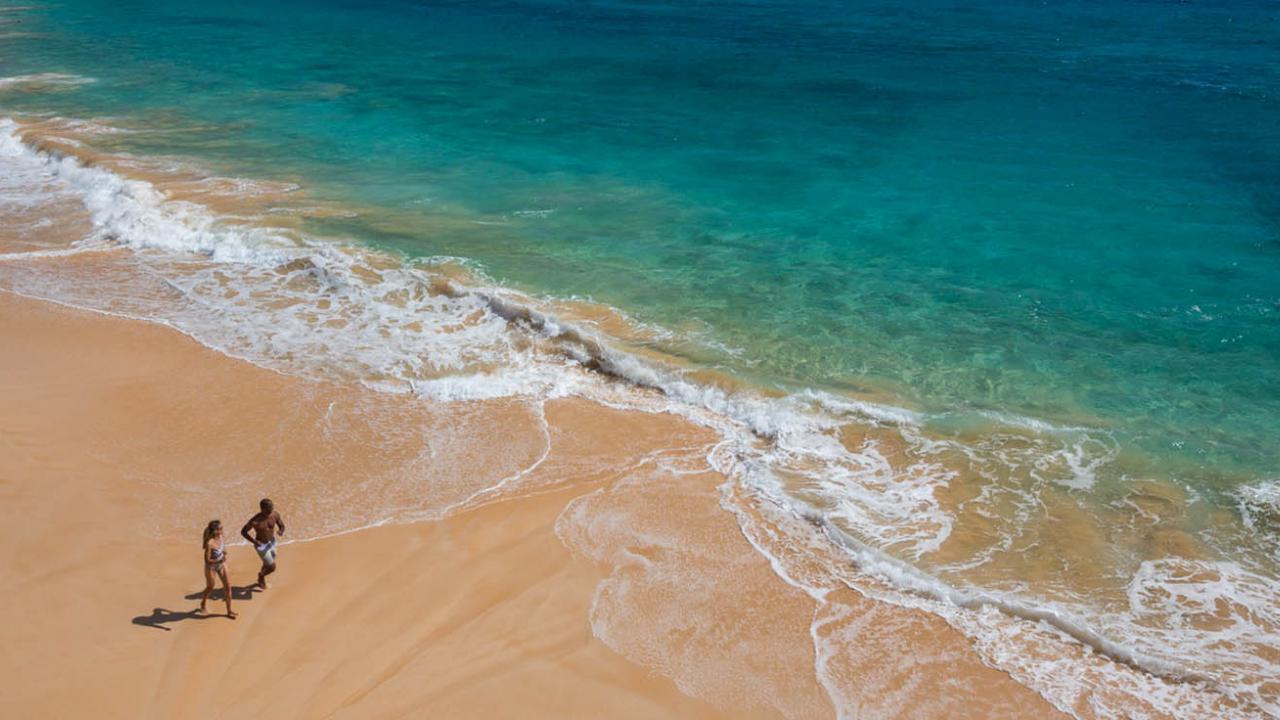Please keep the following tips in mind as you consider writing about and visiting Oʻahu, one of the most special places on the planet. Mahalo for doing your part to responsibly promote and protect the Hawaiian Islands.
How We Work with Media
The Oʻahu Visitors Bureau (OVB) works with U.S.-based media to tell the unique stories about Oʻahu, its culture and the people who call the island home. Our public relations team can assist with fact checking, story ideas, recommendations, images and more. We also consider media support for qualified journalists or broadcast productions, and the level of support is based on our resources, type of content and outlet, time of year and budget. To be considered for a sponsored media visit, please complete our Travel Assistance Questionnaire and keep the following important factors in mind:
- Due to the volume of requests, we request at least six (6) weeks notice for sponsored media visits. In working with members, and industry partners, OVB requires adequate time for evaluation and coordination of all travel logistics.
- All media receiving travel assistance to Oʻahu from OVB are required to complete a Waiver and Release Form.
- OVB only provides travel assistance for qualified media on assignment. If you are traveling with a writing partner or photographer, he/she must complete a separate form to be considered for assistance.
- We do not provide attractions passes for media.
Sensitive Destinations and Activities
There are areas and activities that the Oʻahu Visitors Bureau does not promote, and does not support editorial, video, photographic and social media coverage due to safety, trespass and other reasons. Please reference island specific pages as a reference guide for areas and activities NOT to include in your promotion of Oʻahu in any medium.
- Laniākea Beach: Promotion is not advised due to community concerns about pedestrian safety, increased vehicular traffic and limited shoulder parking on Route 83, which parallels the beach.
- Kailua Beach: Promotion is not advised due to community concerns about increased vehicular traffic and limited parking on residential roads near the beach.
- Lanikai Beach: Promotion is not advised due to community concerns about increased vehicular traffic and limited shoulder parking on residential roads near the beach.
- Hālona Blowhole: High surf and rough ocean conditions pose serious safety issues at the blowhole site. If promoting, please encourage visitors to comply with all warning signage and remain behind safe-distance barriers. Standing in the immediate area of the blowhole is unsafe; please refrain from posting photography of people in this area.
- Hanauma Bay Nature Preserve Nature Reserve: If promoting, please reference the beach and bay’s designation as a state-protected Marine Life Conservation District and nature preserve.
- Olomana Trail: The trail has precipitous vertical drops, extremely narrow ridge passes and is especially dangerous during wet conditions. If promoting, please advise that the trail is for expert hikers only.
- Ha‘ikū Stairs (aka Stairway to Heaven): The stairway is closed to the public. Accessing it is considered trespassing and is illegal.
Travel Tips
- Please respect the land, people and communities.
- Comply with all signage. Do not go beyond warning signage or safe-distance barriers.
- Check ocean conditions (ē.g. high surf warnings) and weather conditions (ē.g. flash floods) before venturing out. Adhere to lifeguard warnings and issuances.
- Note that taking rocks, sand and other natural materials is prohibited by law.
- Wear reef safe sunscreen. Hawaiʻi now bans the sale of sunscreen containing the coral-harmful chemicals oxybenzone and octinoxate.
- Keep your distance from Hawaiʻi marine animals including, but not limited to, monk seals, turtles and dolphins.
- Please do not embark on “off the beaten path” experiences if you are unsure of trespassing, safety and/or cultural restrictions.
Other Considerations
- A person may be from Hawaiʻi, but should not be referred to as “Hawaiian” unless they are of Native Hawaiian descent. Instead of “Hawaiian officials” or “Hawaiian residents” please say “Hawaiʻi officials” or “local residents.”
- For cuisine, it’s typically safe to say “Hawaiʻi cuisine/dish” over “Hawaiian cuisine/dish” since there may be some slight altering to recipes that may make the dish not “Hawaiian.
- HVCB and its Island Chapters recognize the use of the ‘ʻokina [ ‘ ] or glottal stop, one of the eight consonants of the modern Hawaiian language; and the kahakō [ā] or macron, a diacritical mark. However, we respect the individual use of the ‘ʻokina and kahakō for names of organizations and businesses. Certain non-English characters don’t always appear correctly on various web browsers, so we recommend omitting them for online content.
View and download the Ma‘ema‘e toolkit here.
Photography
When selecting images, choose photos that capture an authentic moment. Please keep the following in mind as you’re searching for visual assets to complement your story:
- Images must reflect the correct island (do not use a Kauaʻi image for an Oʻahu story).
- Images must be shot in Hawaiʻi.
- Images should not be flipped, skewed or otherwise altered in a way that renders them visually inaccurate.
- Natural beauty is one of The Hawaiian Islands’ brand pillars, so images should not be over-edited or colorized.
- The use of drones is prohibited. Any exceptions must first be approved by the Federal Aviation Agency.






